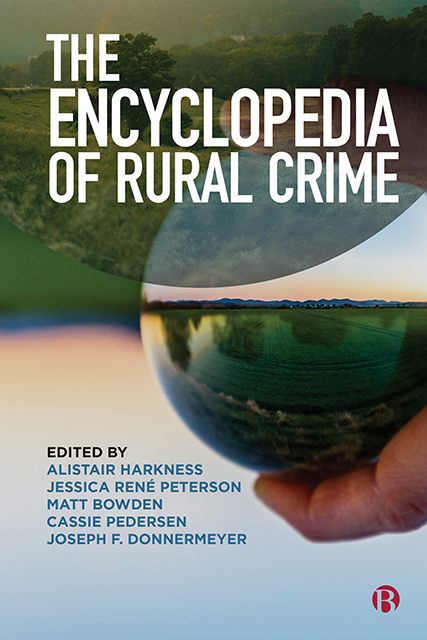Book contents
43 - Wildlife Crime, Trafficking and Poaching
Published online by Cambridge University Press: 20 June 2023
Summary
The term ‘wildlife’ generally refers to animals that live in a wild state outside of human control. In some circumstances it also includes flora as well as fauna. For example, the Convention on International Trade in Endangered Species of Wild Fauna and Flora (CITES) includes plants as well as non-human animals in its definition. For present purposes, the main focus will be on non-human animals. For crimes and harms pertaining to plants, refer to literature on threats to biodiversity, the United Nations Convention on Biodiversity and the work of the Intergovernmental Science-Policy Platform on Biodiversity and Ecosystem Services (IPBES).
Wildlife crimes include the illegal killing and cruel treatment of non-human animals, the illegal transport and trade in animals and the illegal taking of animals from their habitat for human uses (see Nurse and Wyatt, 2020). Put simply, wildlife crimes consist of illegal hunting, trafficking and using of non-human animals. Why and how this occurs varies according to the status of the animals and the social context within which transgression occurs.
Speciesism describes the treatment of non-human animal species in discriminatory and/ or exploitive ways by humans, based upon an assumption of human superiority. Most wildlife crimes tend to privilege human interests (for example, facilitating the ongoing use of animals as a resource), rather than acknowledging the intrinsic worth or value of non-human animals (for example, through granting of legal personhood).
The status of animals can be distinguished according to two main criteria – wildlife or domesticated – and within each of these categories according to how the animal is perceived relative to human needs – service to or service for. These are inherently anthropocentric categorizations in the sense that the ways in which animals are classified reflect human interventions over time, and human notions of usefulness. Such descriptions are nonetheless essential in assessing matters pertaining to non-human animals as these are presently constituted in law and social practices (see Wyatt, 2013).
For instance, what is defined and what is valued when it comes to non-human animals is highly variable and subject to ongoing contestation at the level of philosophy as well as legislative practice and law enforcement.
- Type
- Chapter
- Information
- The Encyclopedia of Rural Crime , pp. 170 - 174Publisher: Bristol University PressPrint publication year: 2022



